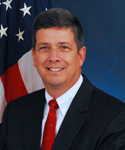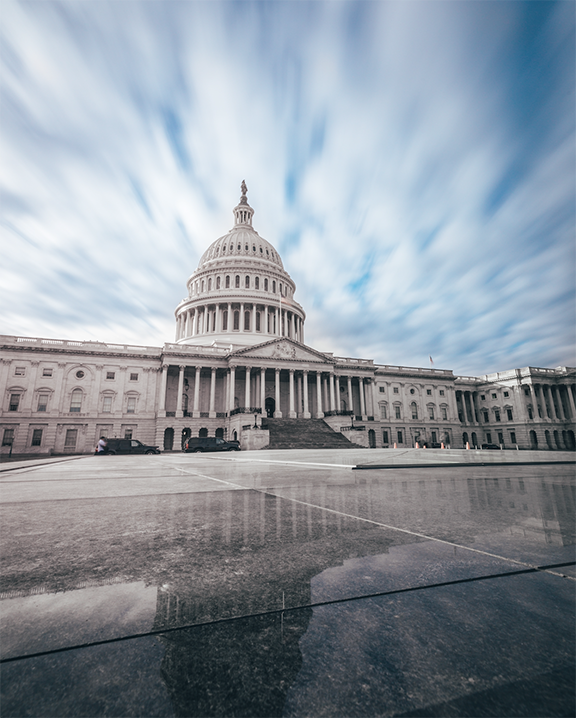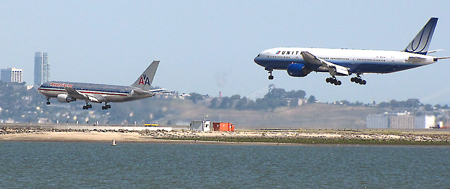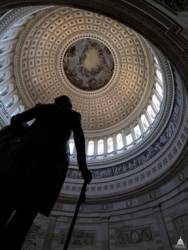 John Porcari, US DoT Deputy Secretary
John Porcari, US DoT Deputy SecretaryU.S. Deputy Secretary of Transportation John Porcari told a congressional committee today (February 8, 2012) that the expenditure of “substantial federal resources” in assisting LightSquared to gain approval for its terrestrial wireless broadband system was “unusual” yet “merited,” but that “further investment cannot be justified at this time.”
U.S. Deputy Secretary of Transportation John Porcari told a congressional committee today (February 8, 2012) that the expenditure of “substantial federal resources” in assisting LightSquared to gain approval for its terrestrial wireless broadband system was “unusual” yet “merited,” but that “further investment cannot be justified at this time.”
Porcari is co-chair of the National Space-Based Positioning, Navigation and Timing (PNT) Executive Committee (ExCom), which recently told the National Telecommunications and Information Administration (NTIA) that two rounds of testing LightSquared’s transmissions had shown such widespread interference to GPS that no further tests were needed.
Instead, in testimony before the Aviation Subcommittee of the U.S. House Transportation and Infrastructure Committee, Porcari restated the ExComm’s proposal in that letter “to work with NTIA to draft new GPS spectrum interference standards that will help inform future proposals for non-space, commercial uses in the bands adjacent to the GPS signals, to strengthen existing national policy protection of adjacent band spectrum.”
He added, “We will ensure that any such proposals are clearly communicated with stakeholders and are implemented without affecting existing and evolving uses of space-based PNT services vital to economic, public safety, scientific, and national security needs.”
Porcari pointed out that “Substantial federal resources, including over $2 million from the FAA [Federal Aviation Administration], have been expended and diverted from other programs in testing and analyzing LightSquared’s proposals.”
However, the subcommittee hearing represented an effort to get beyond the specific case of LightSquared and address the need for written policies, laws, or mechanisms by which government can protect GPS signals from future interference.
During the hearing the PNT ExCom received substantial support from other witnesses for being given a stronger role in protecting GPS.
Thomas Hendricks, senior vice-president of safety, security and operations, Air Transport Association, argued for a “a governmentwide policy that guides federal agencies’ responses when potential interference issues emerge. That policy must make clear that interference in the aviation spectrum is prohibited and that other users cannot be permitted to encroach in the aviation spectrum.”
The PNT ExComm was, Hendricks said, “the most obvious place to begin to strengthen governmental policy against GPS interference.”“At the very least, the FCC should be required to consult with the PNT before taking action on any application to operate a terrestrial-based communications network that may affect the L-band spectrum, which is the band that GPS uses,” Hendricks added.
John Foley, director of Aviation GNSS Technology for Garmin AT, Inc., argued that, given the events of the past year, future coordination “be improved through some type of mechanism that requires the FCC to obtain PNT ExCom sign-off or approval” when proceedings before the FCC raise questions of potential interference to GPS.
“Garmin believes that officials involved in the PNT are those best qualified to decide how this increased coordination and approval should be structured,” he said, adding that the ExCom cochairs might want to create a post of “Chief GPS Officer” drawn alternately from the departments of defense and transportation to help them in this task.
Scott Pace, director of the Space Policy Institute, Elliott School of International Affairs at George Washington University, took exception with part of the ExComm’s proposal. “While a reasonable sounding statement, I would have preferred to avoid the word ‘standards’ and talk instead about GPS spectrum protection criteria. The latter is more likely to be useful in practice.”
The primary risk in such an effort, he said, is that it would produce proposals to impose regulatory standards limiting the capabilities of protections afforded to GPS receivers.
“However,” Pace added, “it is notable that the National PNT Executive Committee is willing to take on this task” of spectrum protection. He urged that any such effort use the “proven successful model” of relying on the National PNT Engineering Forum (NPEF) and an “extensive, open consultation with industry.”
Pace also cautioned against turning the effort into one of establishing receiver standards, which can provide a “safe haven” from competitive forces and a “subtle means of sacrificing some categories of users and their applications.”
Yesterday (February 7) LightSquaredasked the Federal Communications Commission (FCC) to develop receiver reliability standards for unlicensed GPS devices to ensure they perform reliably and take into account licensed users in nearby bands. That move prompted a response from Jim Kirkland, vice-president and general counsel of Trimble, on behalf of the Coalition to Save Our GPS: LightSquared’s "suggestion that GPS manufacturers should have designed receivers to accommodate a prohibited use is simply self-serving nonsense. In its January 2011 order, the FCC’s International Bureau made clear that LightSquared would not be permitted to commence operations until it had demonstrated that it would not interfere with GPS. LightSquared did not challenge this condition at the time, and has to live up to it."
Four other witnesses outlined the deep dependency of civil and commercial aviation on GPS for current and future operations, emphasizing the large installed base of GPS-aided navigation systems: Thomas L. Hendricks, senior vice-president of safety, security and operations, Air Transport Association; Captain Sean Cassidy, first vice-president, Air Line Pilots Association; Craig Fuller, President and CEO, Aircraft Owners and Pilots Association; and Vincent Galotti, deputy director of the International Civil Aviation Organization’s Air Navigation Bureau.
Future plans for civil aviation include the GPS-based NextGeneration air traffic control system that was boosted by passage of the FAA Air Transportation Modernization and Safety Improvement Act on February 6.
In his testimony, Porcari did address LightSquared’s latest proposal for mitigating its interference, which he described as “a combination of site-by-site tailoring of their network density and operating parameters plus neutral third-party verification.” The deputy secretary noted that this would require site-by-site analyses to account for differences in signal blockage and reflections prior to initiating any attempt to implement such a solution in order to resolve the remaining technical issues on the specific propagation models.
Consequently, he said, “Even if these conditions could be accomplished, maintaining the in-air power level limit presents a severe challenge, as the surrounding environment, LightSquared’s network, and aviation operations are all dynamic and continue to change.”
Porcari concluded that “LightSquared’s proposal would require constant, individual monitoring and adjustments to over 40,000 broadcasting sites nationwide, to ensure that they could be, and would remain, consistent with air safety requirements. This is simply not practical.”





